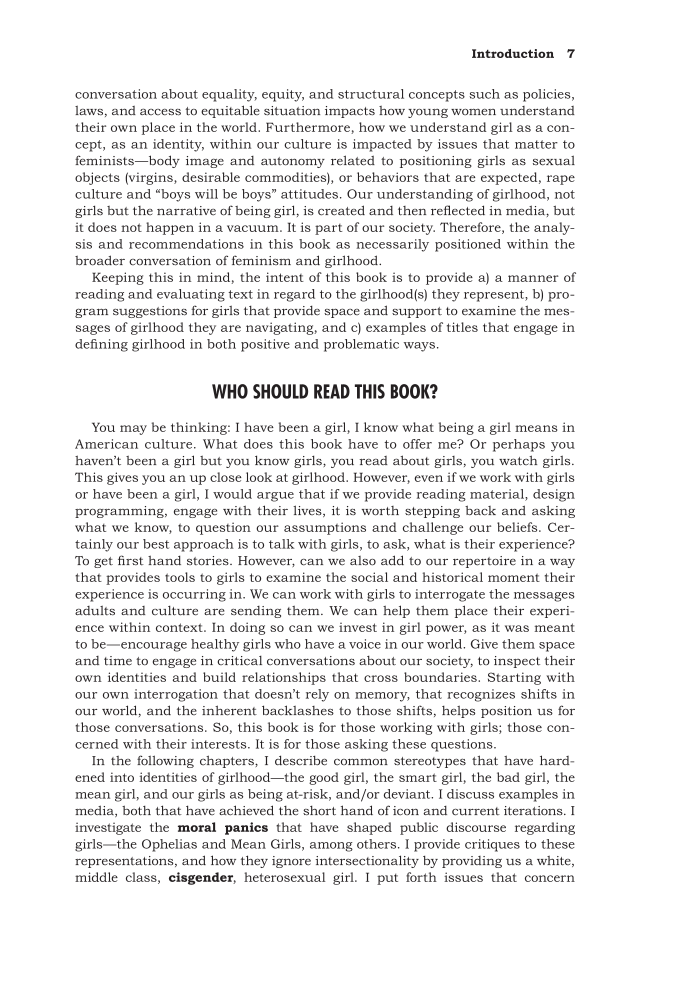Introduction 7 conversation about equality, equity, and structural concepts such as policies, laws, and access to equitable situation impacts how young women understand their own place in the world. Furthermore, how we understand girl as a con- cept, as an identity, within our culture is impacted by issues that matter to feminists—body image and autonomy related to positioning girls as sexual objects (virgins, desirable commodities), or behaviors that are expected, rape culture and “boys will be boys” attitudes. Our understanding of girlhood, not girls but the narrative of being girl, is created and then reflected in media, but it does not happen in a vacuum. It is part of our society. Therefore, the analy sis and recommendations in this book as necessarily positioned within the broader conversation of feminism and girlhood. Keeping this in mind, the intent of this book is to provide a) a manner of reading and evaluating text in regard to the girlhood(s) they represent, b) pro- gram suggestions for girls that provide space and support to examine the mes- sages of girlhood they are navigating, and c) examples of titles that engage in defining girlhood in both positive and problematic ways. WHO SHOULD READ THIS BOOK? You may be thinking: I have been a girl, I know what being a girl means in American culture. What does this book have to offer me? Or perhaps you haven’t been a girl but you know girls, you read about girls, you watch girls. This gives you an up close look at girlhood. However, even if we work with girls or have been a girl, I would argue that if we provide reading material, design programming, engage with their lives, it is worth stepping back and asking what we know, to question our assumptions and challenge our beliefs. Cer- tainly our best approach is to talk with girls, to ask, what is their experience? To get first hand stories. However, can we also add to our repertoire in a way that provides tools to girls to examine the social and historical moment their experience is occurring in. We can work with girls to interrogate the messages adults and culture are sending them. We can help them place their experi- ence within context. In doing so can we invest in girl power, as it was meant to be—encourage healthy girls who have a voice in our world. Give them space and time to engage in critical conversations about our society, to inspect their own identities and build relationships that cross boundaries. Starting with our own interrogation that doesn’t rely on memory, that recognizes shifts in our world, and the inherent backlashes to those shifts, helps position us for those conversations. So, this book is for those working with girls those con- cerned with their interests. It is for those asking these questions. In the following chapters, I describe common stereotypes that have hard- ened into identities of girlhood—the good girl, the smart girl, the bad girl, the mean girl, and our girls as being at-risk, and/or deviant. I discuss examples in media, both that have achieved the short hand of icon and current iterations. I investigate the moral panics that have shaped public discourse regarding girls—the Ophelias and Mean Girls, among others. I provide critiques to these represen ta tions, and how they ignore intersectionality by providing us a white, middle class, cisgender, heterosexual girl. I put forth issues that concern
Document Details My Account Print multiple pages
Print
You have printed 0 times in the last 24 hours.
Your print count will reset on at .
You may print 0 more time(s) before then.
You may print a maximum of 0 pages at a time.













































































































































































